Ijraset Journal For Research in Applied Science and Engineering Technology
- Home / Ijraset
- On This Page
- Abstract
- Introduction
- Conclusion
- References
- Copyright
Preparation and Evaluation of Polyherbal Cosmetic Cream
Authors: Mr. Nikumbh Gaurav Jagdishsingh , Miss. Shinde. R, Dr. Hingane. L. D.
DOI Link: https://doi.org/10.22214/ijraset.2022.39726
Certificate: View Certificate
Abstract
The present study was to prepare and evaluate the polyherbal cosmetic cream comprising extracts of natural products such as Aloe vera, Cucumis sativus and Daucus carota. Different types of formulations oil in water (O/W) herbal creams namely F1 to F7 were formulated by incorporating different concentrations of stearic acid and cetyl alcohol. The evaluations of all formulations (F1 to F7) were done on different parameters like pH, viscosity, spreadibilty and stability were examined. Formulations F6 and F7 showed good spreadibilty, good consistency, homogeneity, appearance, pH, spreadibilty, no evidence of phase separation and ease of removal. The formulation F6 and F7 shows no redness, edema, inflammation and irritation during irritancy studies. These formulations are safe to use for skin. These studies suggest that composition of extracts and base of cream of F6 and F7 are more stable and safe, it may produce synergistic action.
Introduction
I. INTRODUCTION
Cosmetic products are used to protect skin against exogenous and endogenous harmful agents and enhance the beauty and attractiveness of skin. The use of cosmetics not only developing an attractive external appearance, but towards achieving longevity of good health by reducing skin disorders. The synthetic or natural ingredients
present in skin care formulation that supports the health, texture and integrity of skin, moisturizing, maintaining elasticity of skin by reduction of type I collagen and photoprotection etc. This property of cosmetic is due to presence of ingredients in skin care formulation, because it helps to reduce the production of free radicals in skin and manage the skin properties for long time. The cosmetic products are the best choice to reduce skin disorders such as hyper pigmentation, skin aging, skin wrinkling and rough skin texture etc. The demand of herbal cosmetic is rapidly expanding. This expansion is due to the availability of new ingredients, the financial rewards for developing successful products, consumer demand, and a better
understanding of skin physiology. The plant parts used in cosmetic preparation should have varieties of properties like antioxidant, anti-inflammatory, antiseptic, emollient, antiseborrhatic, antikerolytic activity and antibacterial etc. Herbal products claim to have less side effects, commonly seen with products containing synthetic agents. The market research shows upward trend in the herbal trade with the herbal cosmetic industry playing a major role in fueling this worldwide demand for herbals.
The Aloe vera plant has been known and used for centuries for its health, beauty, medicinal and skin care properties.
Aloe vera is a natural product that is now a day frequently used in the field of cosmetology. It can be applied topically as an emollient for burns, sunburn and mild abrasion, and for inflammatory skin disorders. It has antibacterial, antifungal, antiviral, antioxidant, and antiinflammatory effects. Aloe vera is used externally for its wound healing properties and is supported by clinical investigation. In cosmetics, Cucumis sativa has an excellent potential for cooling, healing and soothing to an irritated skin, whether caused by sun, or the effects of a cutaneous eruption. Cucumis sativa extract is often used for skin problems, wrinkles, sunburn and as an antioxidant.
Author Jain et al. reported the inhibition effect of tyrosinase and melanin synthesis of Cucumis sativa extracts, hence it play important role in whitening of skin. Daucus carota have the highest β-carotene, a precursor of vitamin A, and also contain abundant amount of Vitamin
C. Vitamin A also acts as a very good anti-oxidant which slows down the process of aging. Vitamin C produces collagen in the body which is an essential protein for making our skin elastic. It also prevents wrinkles on the skin[10]. Moreover Prunus amygdalus is enriched with Vitamin E. The above properties are reason for selection of these plants in the preparation of cosmetic products to control the wrinkle and aging in skin.
Therefore, the purpose of this study was to develop herbal cosmetic cream by mixing the extracts of Aloe vera, Cucumis sativa, Daucus carota and oil of Prunus amygdalus, to produce multipurpose effect on skin such as fairness, sunscreen, antiaging and antiwrinkle properties.
II. ROLE OF INGREDIENTS
A. Aloe Vera
Aloe vera is a rich source of antioxidants and vitamins that may help protect your skin.
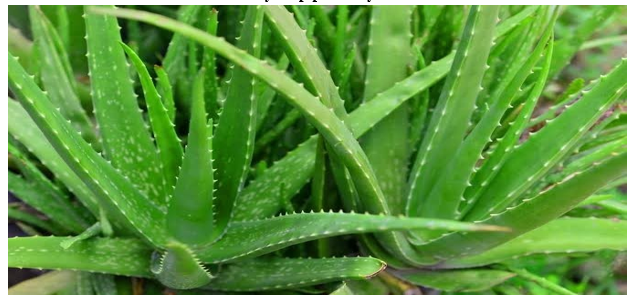
B. Cucumis Sativus
Cucumis Sativus Fruit Extract can repair dry and damaged skin and gives it a softer and smoother appearance. Another benefit is that the pH-value is identical with the human skin.
C. Daucus Carota
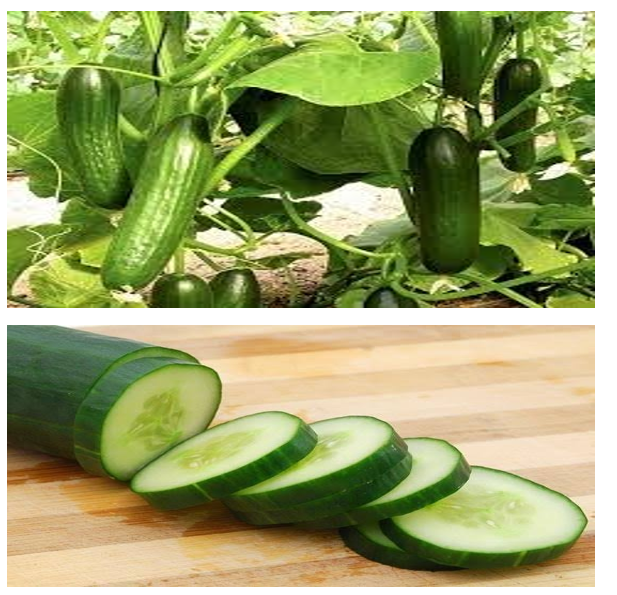
Carrot oil (Daucus Carota Sativa) or carrot root extract is a natural plant oil produced by the orange root of the carrot plant. ... Carrot oil is rich in vitamins A, B, C, D, and E along with essential fatty acids. It features several antioxidants including beta carotene, an essential antioxidant for healthy skin.
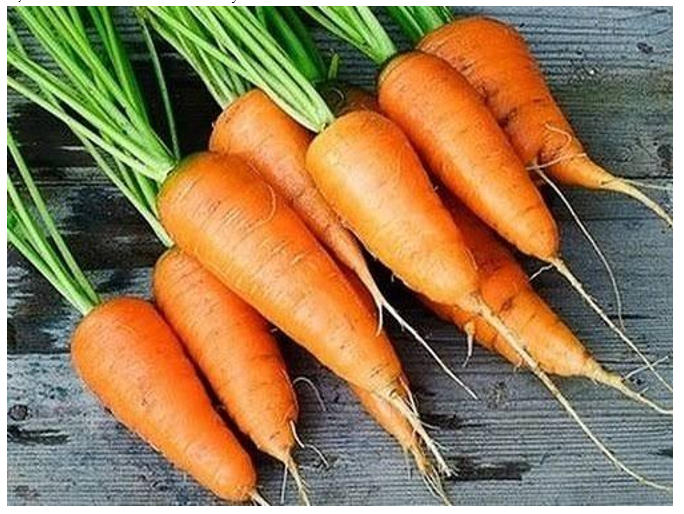
D. Almond Oil
The oil makes an excellent moisturizer for both the skin and hair, and it may even help prevent stretch marks and protect your skin from sun damage.
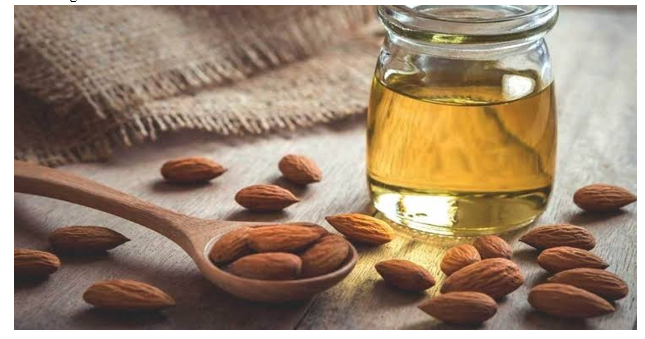
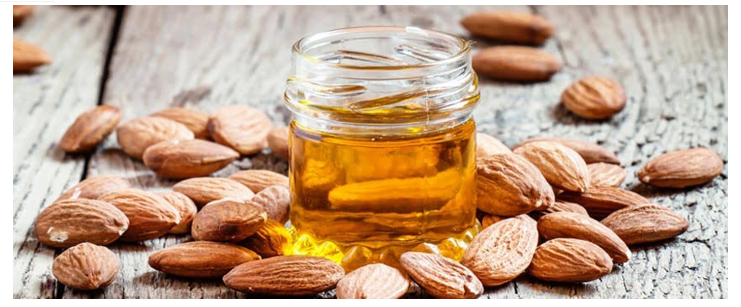
III. MATERIALS AND METHODS
- Preparation of Extracts: Air dried and coarsely powdered (500 gm) of Aloe vera, Cucumis sativus and Daucus carota were placed in soxhlet extractor separately, using petroleum ether and then successively with ethanol. The extracts were then concentrated to dryness under reduced pressure and controlled temperature, respectively and they were preserved in a refrigerator.
- Cream Formulation: Oil in water (O/W) emulsion-based cream (semisolid formulation) was formulated. The emulsifier (stearic acid) and other oil soluble components (Cetyl alcohol, almond oil) were dissolved in the oil phase (Part A) and heated to 75° C. The preservatives and other water soluble components (Methyl paraban, Propyl paraban, Triethanolamine, Propylene glycol, ethanol extract of Aloe vera, Cucumis sativus and Daucus carota were dissolved in the aqueous phase (Part B) and heated to 75° C. After heating, the aqueous phase was added in portions to the oil phase with continuous stirring until cooling of emulsifier took place. The formula for the cream is given in table 1.
- Evaluation of Cream pH of the Cream: The pH meter was calibrated using standard buffer solution. About 0.5 g of the cream was weighed and dissolved in 50.0 ml of distilled water and its pH was measured.
- Viscosity: Viscosity of the formulation was determined by Brookfield Viscometer at 100 rpm, using spindle no 7.
- Dye Test: The scarlet red dye is mixed with the cream. Place a drop of the cream on a microscopic slide covers it with a cover slip, and examines it under a microscope. If the disperse globules appear red the ground colourless. The cream is o/w type. The reverse condition occurs in w/o type cream i.e. the disperse globules appear colourless in the red ground.
- Homogeneity: The formulations were tested for the homogeneity by visual appearance and by touch.
- Appearance: The appearance of the cream was judged by its color, pearlscence and roughness and graded.
- After Feel: Emolliency, slipperiness and amount of residue left after the application of fixed amount of cream was checked.
- Type of Smear: After application of cream, the type of film or smear formed on the skin were checked.
- Removal: The ease of removal of the cream applied was examined by washing the applied part with tap water.
- Acid Value: Take 10 gm of substance dissolved in accurately weighed, in 50 ml mixture of equal volume of alcohol and solvent ether, the flask was connected to reflux condenser and slowly heated, until sample was dissolved completely, to this 1 ml of phenolphthalein added and titrated with 0.1N NaOH, until faintly pink color appears after shaking for 30 seconds.
Acid value = n*5.61/w
n = the number of ml of NaOH required. w = the weigh of substance. 2.12 Saponification value
Introduce about 2 gm of substance refluxed with 25 ml of 0.5 N alcoholic KOH for 30 minutes, to this 1 ml of phenolphthalein added and titrated immediately, with 0.5 N HCL.
Saponification value = (b-a)*28.05/w
The volume in ml of titrant = a The volume in ml of titrate = b
The weigh of substance in gm = w
12. Irritancy Test: Mark an area (1sq.cm) on the left hand dorsal surface. The cream was applied to the specified area and time was noted. Irritancy, erythema, edema, was checked if any for regular intervals up to 24 hrs and reported.
13. Accelerated Stability Testing: Accelerated stability testing of prepared formulations was conducted for 2 most stable formulations at room temperature, studied for 7 days. They were formulation number 4 and 5 at 40 oC ± 1 oC for 20 days. The formulations were kept both at room and elevated temperature and observed on 0th, 5th, 10th, 15th and 20th day for the following parameters.
IV. RESULTS
- pH of the Cream: The pH of the cream was found to be in range of 5.6 to 6.8 which is good for skin pH. All the formulations of cream were shown pH nearer to skin required i.e pH of F1-5.6, F2-5.8, F3-5.9, F4-6.2, F5-6.5, F6-6.8 and F7-6.7.
- Viscosity: The viscosity of cream was in the range of 28001 – 27025 cps which indicates that the cream is easily spreadable by small amounts of shear. But F6 and F7 shows good spreadable property than other formulations.
- Acid Value and Saponification Value: The results of acid and saponification value of all formulation of cream are presented in table 2, and showed satisfactorily values.
- Irritancy Test: The formulation F6 and F7 shows no redness, edema, inflammation and irritation during irritancy studies. These formulations are safe to use for skin.
- Dye Test: This dye confirm that all formulation were o/w type emulsion cream. But formulation (F6) shows more stable in o/w type emulsion.
- Homogeneity: All formulations produce uniform distribution of extracts in cream. This was confirmed by visual appearance and by touch.
- Appearance: When formulation were kept for long time, it found that no change in colour of cream.
- After Feel: Emolliency, slipperiness and amount of residue left after the application of fixed amount of cream was Found.
- Type of Smear: After application of cream of F6 and F7, the type of smear formed on the skin were non greasy
- Removal: The cream of F6 and F7 applied on skin was easily removed by washing with tap water
V. DISCUSSION
Aloe vera, Cucumis sativus and Daucus carota are well known for its medicinal and cosmeceuticals value in Indian traditional system of medicine. In the present work, it was decided to extract and formulate polyherbal cosmetic cream. The tyrosinase inhibitors substances are used in cosmetic products as skin whitening agent to reduce skin pigmentation by decreasing the melanin production. The aloesin, a C-glycosylated chromone reported to exhibit antityrosinase activity, and also inhibited melanin production in cell culture. It has reported that aloesin are present in Aloe vera extract as bioactive compound. Furthermore Aloe vera has been reported to have a protective effect against damage to skin from ultra violet radiation due to its antioxidant activity. Aloe vera contains mucopolysaccharides help in binding moisture into the skin. Aloe stimulates fibroblast which produces the collagen and elastin fibers making the skin more elastic and less wrinkled. Aloe’s benefits can be attributed at least partly to its nutrients, since it contains proteins, carbohydrates (including mucopolysaccharides), vitamins (including B1, B2, B3, B6, C, and folic acid) and minerals. These nutrients, although beneficial individually, may work synergistically to soothe, heal, moisturize and regenerate the skin. From above it concluded that this plant extracts produce excellent whitening, antiwrinkle and sunscreen effect on skin. The production of free radicals in the body causes oxidative stress and oxidative photodamage of macromolecules and plasma membrane components in the skin. This further leads to premature aging of the skin which is characterized by the rough skin textures and wrinkles. ßcarotene is the most abundant and most efficient precursor of vitamin A. ß-carotene is a radical scavenger, quenching singlet oxygen and free radicals without damage to cells and tissue, hence it used as UV protection of skin. ßcarotene are capable to increase cell turn-over and regeneration in the outer layers of the skin, making it effective for diseases and skin conditions related to epithelium damage. It also enhances the appearance of dry or damaged skin by reducing flaking and restoring suppleness. In skin care products, beta-carotene is used for its antioxidant properties, its ability to protect the skin from sun damage, and its ability to help even the skin tone, deeming it an active anti-aging ingredient. It is reported that Daucus carota contain abundant amount of ß-carotene and Vitamin C, moreover Cucumis sativus exhibited highly antioxidant activity. From above discussion it is assumed that ßcarotene containing plant as well as antioxidant activity producing plant can be used in face care cream, to produce sunscreen, antiaging and antiwrinkle effects. Hence both extracts of plants are good choice to use as ingredient in face cream. The almond oil increases the glow on skin and has emollient properties. The prepared polyherbal face cream was O/W type emulsion, hence can be easily washed with plane water that gives better customer compliance. There is a growing demand for herbal cosmetics in the world market and they are invaluable gifts of nature. Therefore, we tried to make a polyherbal face cream containing the extract of Aloe vera, Cucumis sativus and Daucus carota. Our study indicated that the formulation F6 and F7 found to be more stable, while remaining formulations were not stable and resulted in breakdown of the emulsion when stored for long time. These formulations F6 and F7 had almost constant pH, homogeneous, emollient, non-greasy and easily removed after the application. The stable formulations were safe in respect to skin irritation and allergic sensitization.
Table 1: Composition of cream
Formula % W/W
Ingredients F1 F2 F3 F4 F5 F6 F7
|
Ethanol extract of D. corota |
0.5 0 |
0.5 0 |
0.5 0 |
0.5 0 |
0.5 0 |
0.5 0 |
0.5 0 |
|
Ethanol extract of A. vera |
0.7 5 |
0.7 5 |
0.7 5 |
0.7 5 |
0.7 5 |
0.7 5 |
0.7 5 |
|
Ethanol extract of C. sativus |
0.7 5 |
0.7 5 |
0.7 5 |
0.7 5 |
0.7 5 |
0.7 5 |
0.7 5 |
|
Stearic acid |
12 |
10 |
10 |
8 |
8 |
6 |
6 |
|
Cetyl alcohol |
2 |
3 |
4 |
3 |
4 |
3 |
4 |
|
Almond oil |
4 |
4 |
4 |
4 |
4 |
4 |
4 |
|
Glycerol |
3 |
3 |
3 |
3 |
3 |
3 |
3 |
|
Methyl paraban |
0.0 2 |
0.0 2 |
0.0 2 |
0.0 2 |
0.0 2 |
0.0 2 |
0.0 2 |
|
Triethanolamin e |
qs |
qs |
qs |
qs |
qs |
qs |
qs |
|
Water, qs, 100 |
qs |
qs |
qs |
qs |
qs |
qs |
qs |
Table 2: Test applied for acid value and saponification
|
value |
|
S. No. Parameters Formula |
|
F1 F2 F3 F4 F5 F6 F7 |
|
1. |
|
Acid value 6.8 6.4 6.4 5.8 5.9 5.7. 5.7 |
|
2. |
|
Saponification |
|
Value 30.1 28.2 27.4 26.2 26.8 23.4 22.3 |
Table 3: Type of Adverse effect of formulations
|
Formulation |
Irritant |
Erythema |
Edema |
|
F1 |
NIL |
NIL |
NIL |
|
F2 |
NIL |
NIL |
NIL |
|
F3 |
NIL |
NIL |
NIL |
|
F4 |
NIL |
NIL |
NIL |
|
F5 |
NIL |
NIL |
NIL |
|
F6 |
NIL |
NIL |
NIL |
|
F7 |
NIL |
NIL |
NIL |
Table 4: Physical parameter of F5 and F6 cream on room and accelerated temperatures
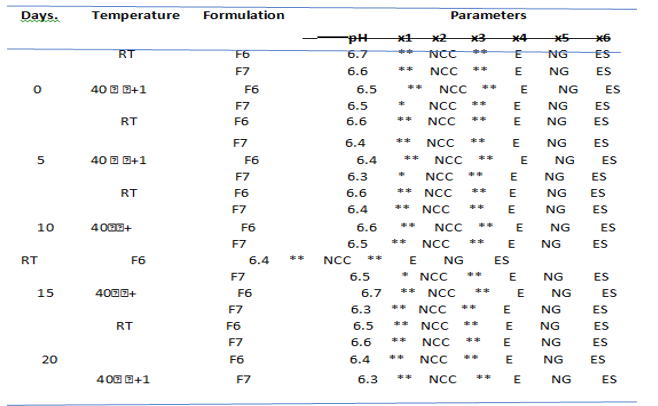
X1-Homogenity, X2-Appearance, X3-Spreadibility, X4-After feel, X5-Type of smear, X6-Removal, **: Good, *: Satisfactory, E: Emollient, NG: Non greasy, ES: Easy, NCC: Not change in colour
Conclusion
From above discussion it is concluded that on combining the extracts of Aloe vera, Cucumis sativus and Daucus carota in different ratio to get multipurpose effect such as whitening, antiwrinkle, antiaging and sunscreen effect on skin. As we know that it is not possible to increase the extent of efficiency of medicinal and cosmetic property of single plant extract, but by combining the different plant extracts it can be possible to increase the efficacy of extracts. In this regard, we mixed the extracts of Aloe vera, Cucumis sativus and Daucus carota to improve as well synergize the cosmetic properties of prepared products compare to individual extracts. Further research will carry out to check scientifically the synergistic action of selected formulation. These studies suggest that composition of extracts and base of cream of F6 and F7 are more stable and safe; it may produce synergistic action.
References
[1] S. Saraf, C.D. Kaur, Pharmacogn. Rev., 2010, 4(7), 111. [2] H.S. Datta, R. Paramesh, J. Ayurveda. Integr. Med., 2010, 1(2), 110-113. [3] A. Rajvanshi, S. Sharma, S.L. Khokra, R.K. Sahu, R. [4] Jangde, Pharmacologyonline, 2011, 2, 1238-1244. [4] M. Singh, S. Sharma, S.L. Khokra, R.K. Sahu, R. Jangde, Pharmacologyonline, 2011, 2, 1258-1264. [5] M.S. Ashawat, M. Banchhor, S. Saraf, S. Saraf, Phcog. Rev. 2009, 3(5), 82-89. [5] S.M. Moghaddasi, S.K. Verma, Int. J. Biol. Med. Res. 2011, 2(1), 466-471. [6] T. Aburjai, F.M. Natsheh, Phytother. Res. 2003, 17, 987-1000. [7] A. Feil, M.R. Namazi, Ital. Dermatol. Venereol. 2009, 144(1), 85-91. [8] N. Akhtar, A. Mehmood, B.A. Khan, T. Mahmood, H.M.S. Khan, T. Saeed, African Journal of Biotechnology, 2011, 10(7), 1206-1216. [9] A.K. Mishra, A. Mishra, P. Chattopadhyay, T.J.P.R., 2011, 10(3), 351-360. [10] H.J. Rao, J. Clin. Diagnost. Res., 2012, 6(1), 130-135. [12]R.K. Sahu, A. Roy, P. Kushwah, A. Sahu, R.J.T.C.S., 2012, 3(1), 16-19. [11] Sahu RK, Roy A, Kushwah P, Khare M, Mudotiya R. Formulation and development of whitening polyherbal face cream. RJTCS 2012; 3(1): 23-27. [12] U. Nandal, R.L. Bhardwaj, Int. Res. J. Plant Sci., 2012, 3(3), 38-46. [13] Y.H. Jin, S.J. Lee, M.H. Chung, J.H. Park, Y.I. Park, T.H. Cho, S.K. Lee, Arch. Pharm. Res., 1999, 22, 232236. [14] N. Smit, J. Vicanova, S. Pavel, Int. J. Mol. Sci., 2009, 10, 5326-5349. [15] M.B. Mapunya, R.V. Nikolova, N. Lall, Evidence-Based Complementary and Alternative Medicine, 2012, 52, 1-6. [16] H, Kambayashi, M. Yamashita, Y. Odake, K. Takada, Y. Funasaka, M. Ichihashi, J. Dermato. Sci., 2001, 27(1), S19–S25. [17] C. Bayerl. Acta. Dermatoven. A.P.A., 2008, 17(4), 160166.
Copyright
Copyright © 2022 Mr. Nikumbh Gaurav Jagdishsingh , Miss. Shinde. R, Dr. Hingane. L. D. . This is an open access article distributed under the Creative Commons Attribution License, which permits unrestricted use, distribution, and reproduction in any medium, provided the original work is properly cited.

Download Paper
Paper Id : IJRASET39726
Publish Date : 2021-12-30
ISSN : 2321-9653
Publisher Name : IJRASET
DOI Link : Click Here
 Submit Paper Online
Submit Paper Online

